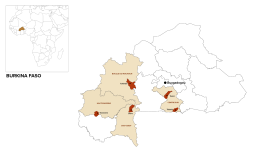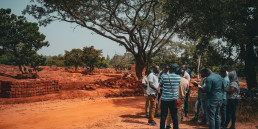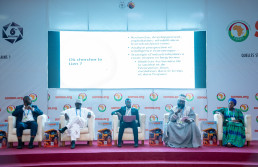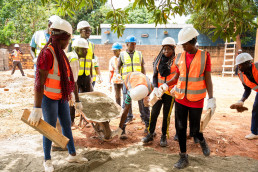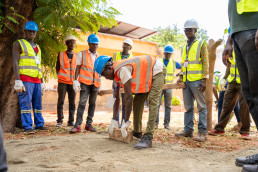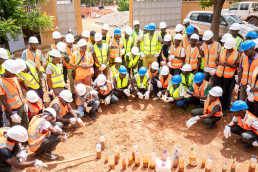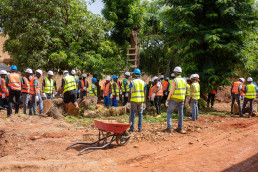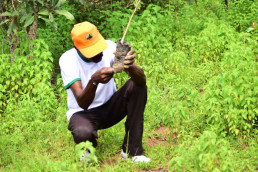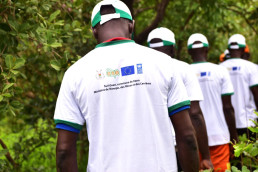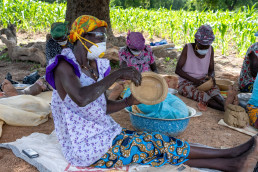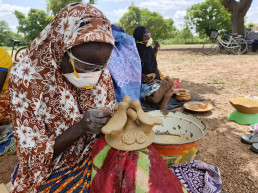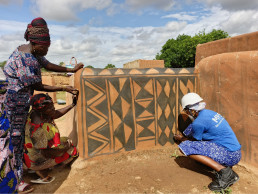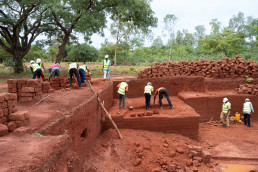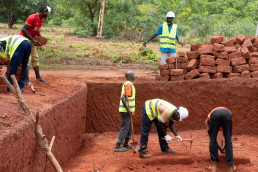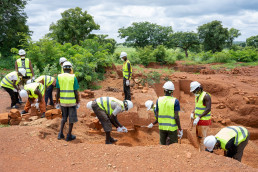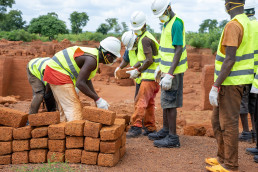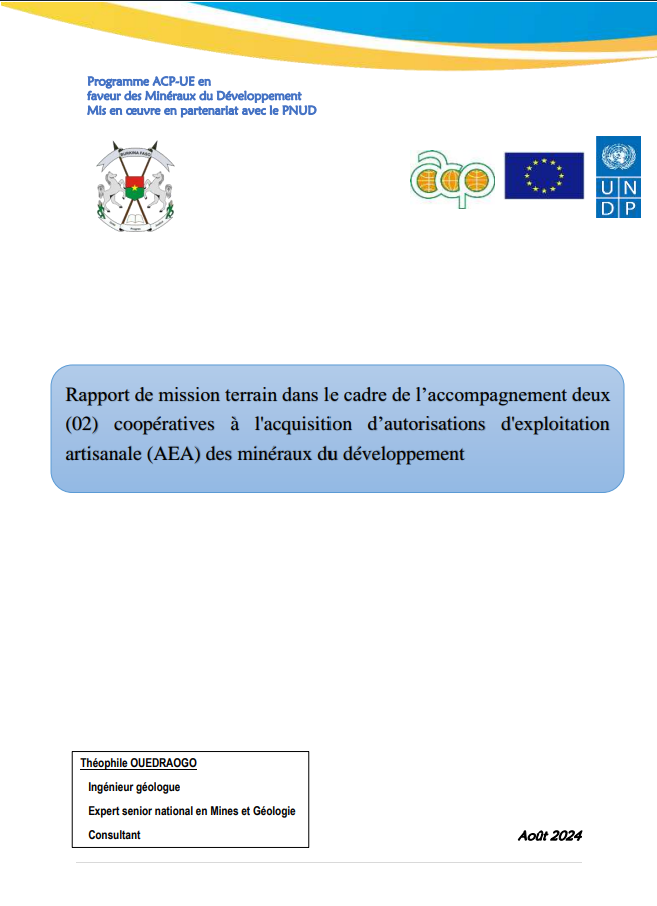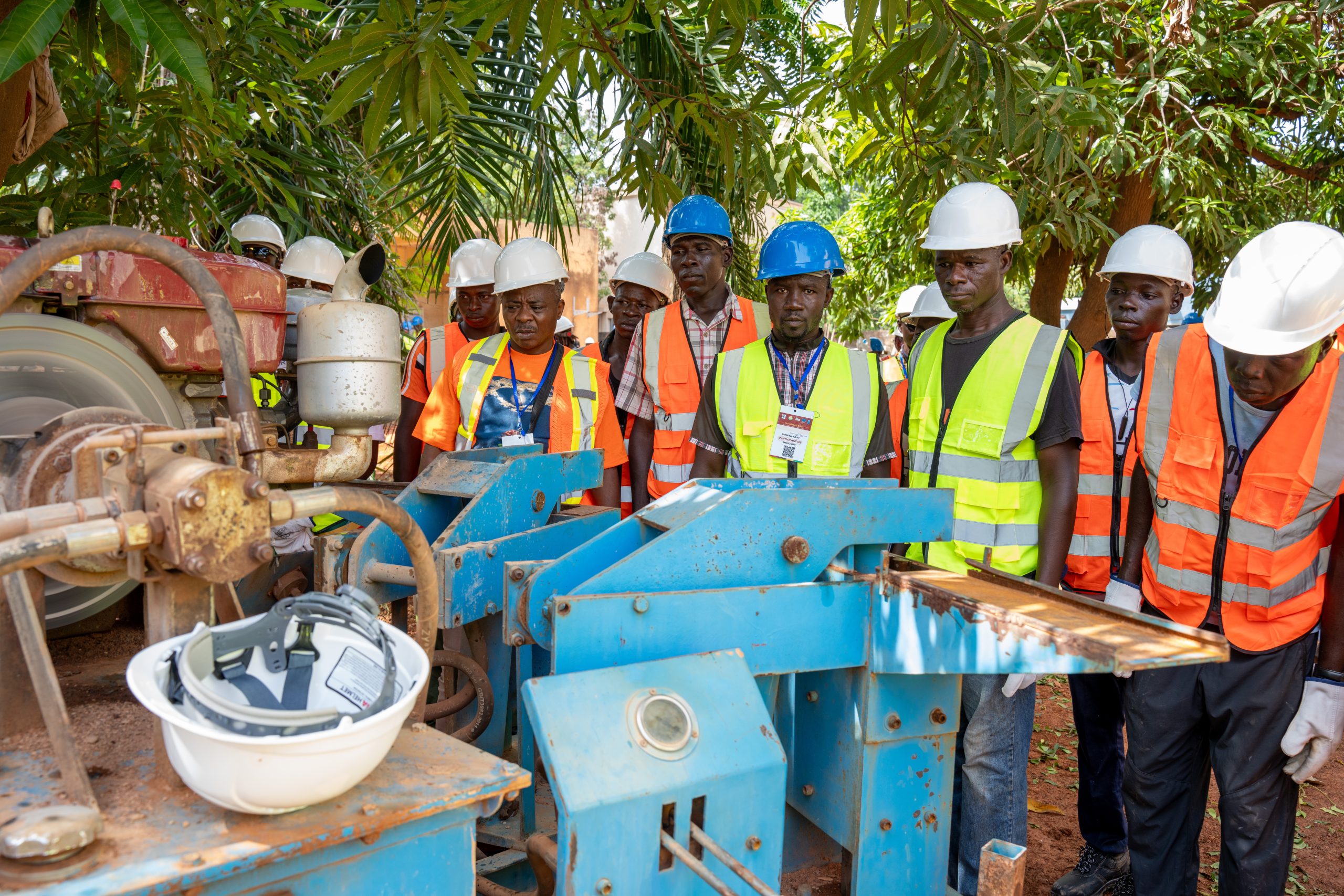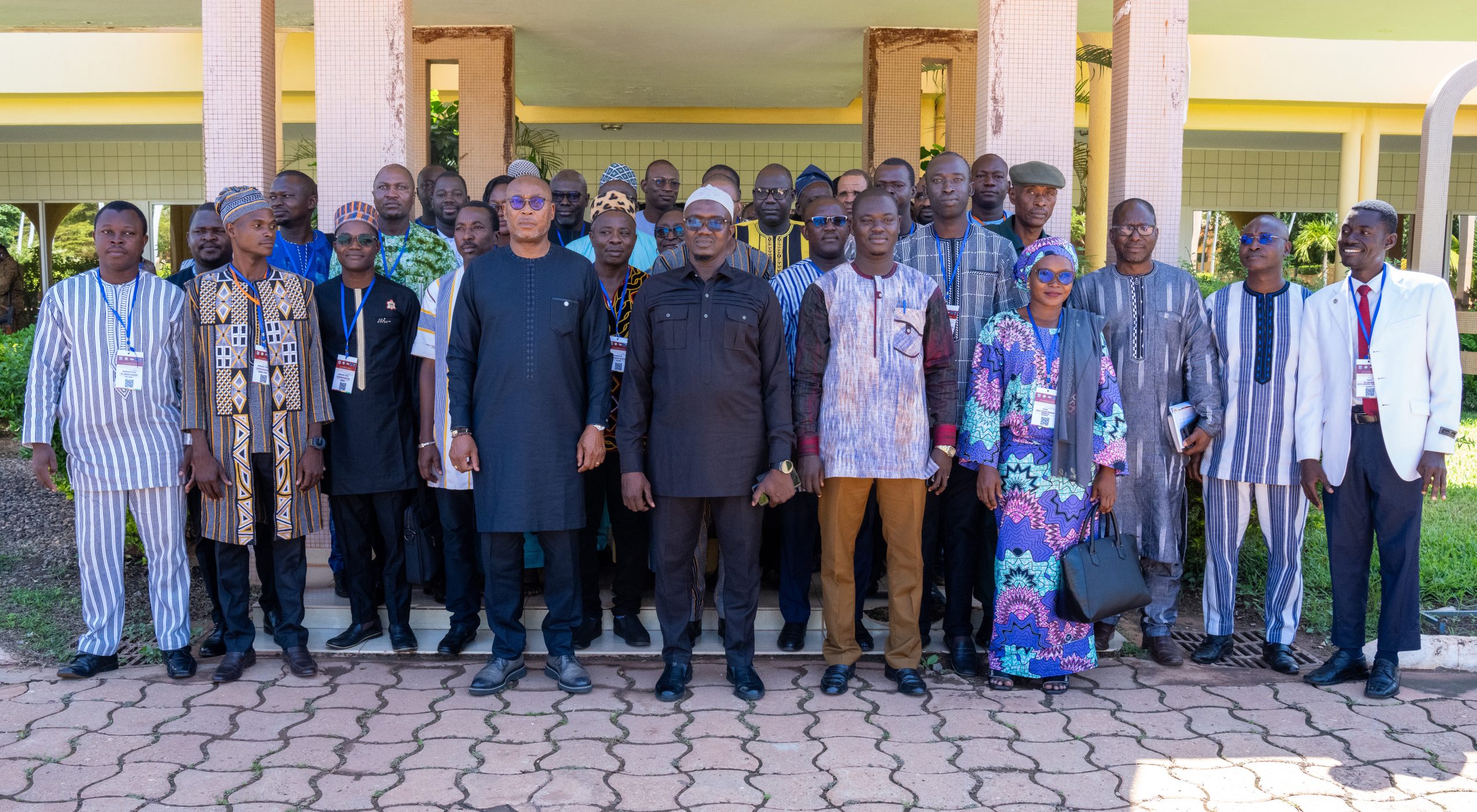BURKINA FASO
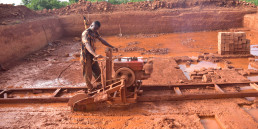
Photo credit: UNDP Burkina Faso
Located at regional crossroads, Burkina Faso serves as a cultural and economic bridge between Sahelian and coastal West African countries. The landscape is marked by breathtaking savanna plateaus, cliffs and isolated granite outcrops. Out of 23 million Burkinabe, 78 percent are youth.
Gold mining is the most important contributor to the country’s exports and foreign exchange earnings. However, a variety of other minerals are also mined in the country.
The Mining Code of Burkina Faso (2024) established a renewed framework for mining, which seeks to simplify permits, support small-scale mining, and enhance environmental and social management.
Artisanal mining is widespread and represents a key opportunity for earning income for youth and women in both rural and peri urban areas.
Development Minerals in Burkina Faso
Burkina Faso has abundant and diverse Development Minerals such as granitoids, common clays, kaolin, dolomitic limestones, feldspar pegmatites, multicolored sandstones, graphite, talc, laterite* and sand. These minerals, widely used in construction and infrastructure projects, play a key role in local economic development, while remaining accessible to most of the population through artisanal mining.
*Laterite is a hardened rock formed as a result of intense tropical weathering. Heavy rains dissolve and wash away most minerals from rocks like basalt or granite over a very long time, leaving behind mainly rusty-red iron and aluminum oxides. When this leftover material is exposed to air and dries out, especially in seasonal dry periods, it hardens irreversibly into a brick-like rock. This hard “laterite” is difficult to dig through and useless for farming because it lacks plant nutrients, but people have historically cut it into blocks to use as building bricks.
Lateritic soil is the weathered, reddish soil layer above the bedrock (and sometimes above a hardened laterite layer) that is in the process of becoming laterite. It’s been leached by rain and is rich in iron/aluminum oxides, making it acidic and naturally poor for growing crops. Crucially, it hasn’t fully hardened into rock yet. While often crumbly or clay-like, it contains patches of material that can harden permanently like laterite if they are dug up, exposed to air, and dried repeatedly. So, lateritic soil is in the “pre-rock” stage.
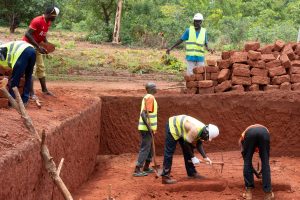
Development Minerals deposits in Burkina Faso

Artisanal and small-scale mining
Artisanal and small-scale mining sector plays an important socio-economic role in Burkina Faso. Both mining and processing of minerals are often done by the same groups of artisanal cooperatives. For example, an artisanal cooperative would mine laterite and use it to produce bricks.
30 000 – 50 000
workers in artisanal mining of granite, sand and gravel
they earn
4x – 8x more income than the national minimum wage
Main materials produced by artisanal miners, annual estimates:
1.3 million tonnes
of sand and gravel
500 000 tonnes
of laterite
30%
of ornamental stone
OUR WORK IN BURKINA FASO
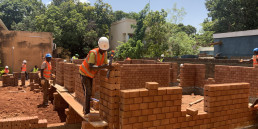
Photo credit: Aza Communications for UNDP Burkina Faso
The Programme in Burkina Faso strengthened the capacities of regulators and artisanal and small-scale miners and producers in the Development Minerals sector in Burkina Faso, helped build the evidence base in Development Minerals, and trained in skills for value addition to Development Minerals – to produce more sustainable construction materials.
KNOWLEDGE AND EVIDENCE
Helped gather evidence and advance knowledge on Development Minerals by:
-
- Conducting a baseline study on artisanal and small-scale exploitation of Development Minerals in the target communes
- Training officials of the General Directorate of Quarries on geological data mapping and reserve estimation for Development Minerals, equipped the Directorate with IT tools
- Supporting field trainings and data collection on Development Minerals
FORMALISATION AND IMPROVING MINING PRACTICES
Helped formalize artisanal mining cooperatives and conducted training and demonstrations to foster more environmentally-friendly mining and restoration practices by:
-
- Supporting formalization of five ASM organizations (cooperatives and associations) with 298 members (of which 198 women)
- Conducting training for 489 artisanal and small-scale miners (213 women)
- Planting 700 trees in mined out sites in Toussiana and Dano communes, setting an example for restoration of ecosystem after mining
TRAINING IN LOW-CARBON CONSTRUCTION TECHNIQUES
Invested in skills training to do value addition to abundant minerals, such as clay and laterite, to produce and supply construction materials by:
-
- Training 100 people, many of them youth, in Stabilized Earth Brick (SEB) production and construction techniques.
- Constructing a demonstration building
- Supplying brickmaking machines to ASM cooperatives to enhance their productivity
- Promoting local materials use, resulting in Dano and Toussiana municipalities committing to use laterite bricks made by artisanal miners for public construction projects
*Stabilized Earth Bricks (SEBs), also known as Compressed Earth Bricks (CEBs), are bricks made by a process of cold stabilization. They are made by mixing about 80% of laterite soil or clayey soil, 8-10% cement, and 12-14% water. The mixture is then compressed using a brick-making machine and left to cure under plastic wrap without using fire.
Compared with fired bricks, Stabilized Earth Bricks do not require kilns and fuel to be produced. They also are less demanding in terms of raw material – whereas for fired bricks, pure clay is needed, for Stabilized Earth Bricks, soil with lower clay content is enough.
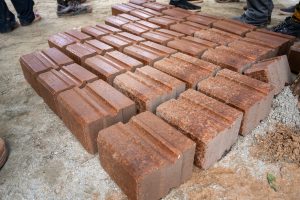
FOCUS AREAS
Enabling Environment
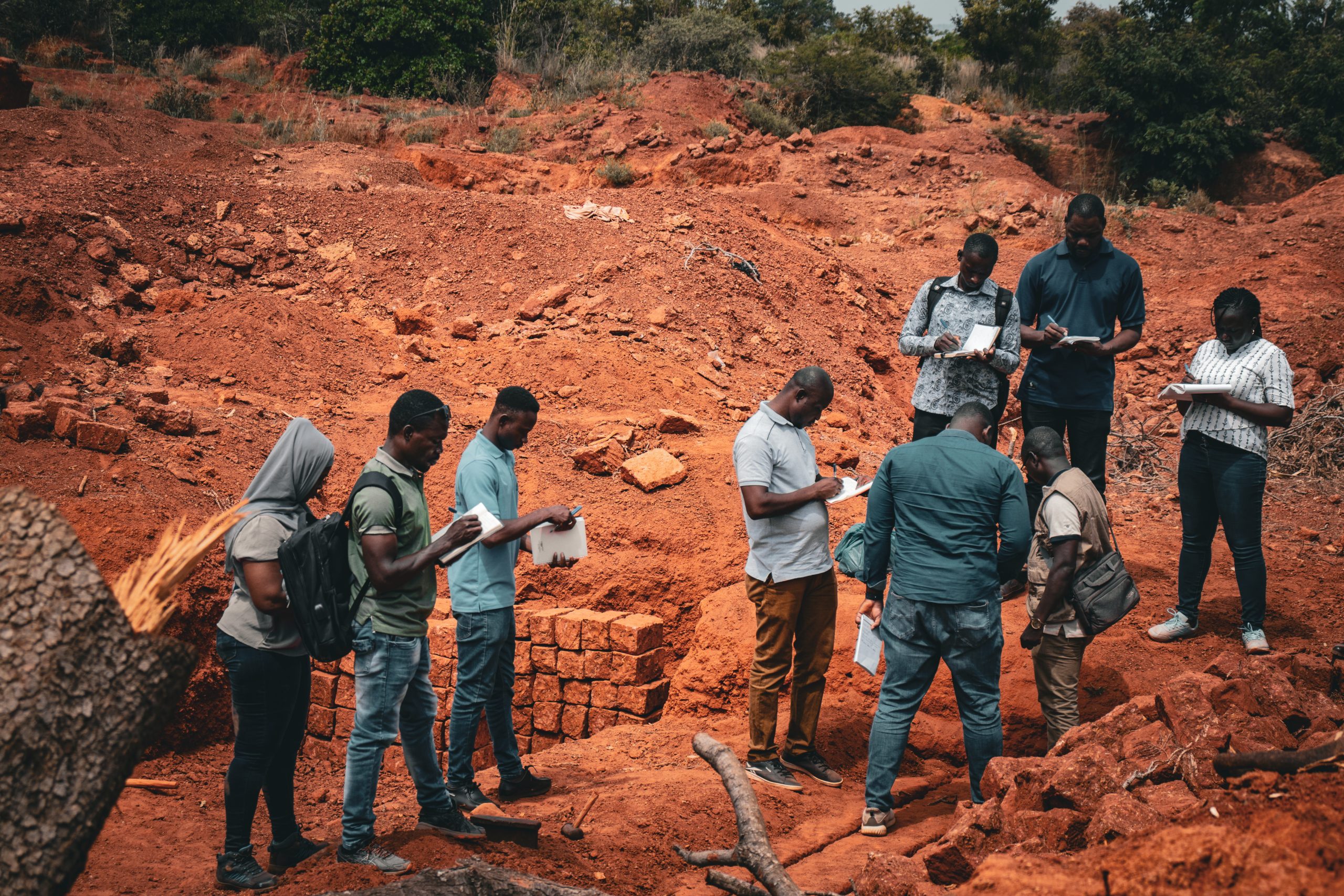
Photo credit: UNDP Burkina Faso
POLICIES AND INSTITUTIONS
The Programme supported mining and use of alternative construction materials through the “Cut Laterite Bricks Days” organized in Dano and Toussiana Municipalities where the activity is rampant. As a result of the Programme’s work, there has been increased institutional support from national and local government authorities for the mining and use of laterite bricks.
*Cut Laterite Bricks (CLB, or BLT – Briques Lateritiques Taillées in French)
are bricks that are obtained from mining and shaping laterite crust and used as bricks.

The municipalities of Dano and Toussiana have taken decisive steps by mandating the use of cut laterite bricks in publicly-funded infrastructure and construction. This institutional support by municipalities is a commitment that cements public procurement of cut laterite bricks – requiring use of local materials and the work of local artisans – for public infrastructure development. At the national level, the term “Development Minerals” was included in a Presidential Decree issued in March 2025, marking its first use in a legal document. These measures create a stable market for local miners, boosting the local economies, while promoting sustainable use of materials. They also strengthen collaboration between artisans and authorities, laying the groundwork for more responsible artisanal mining.
Artisanal and small-scale mining
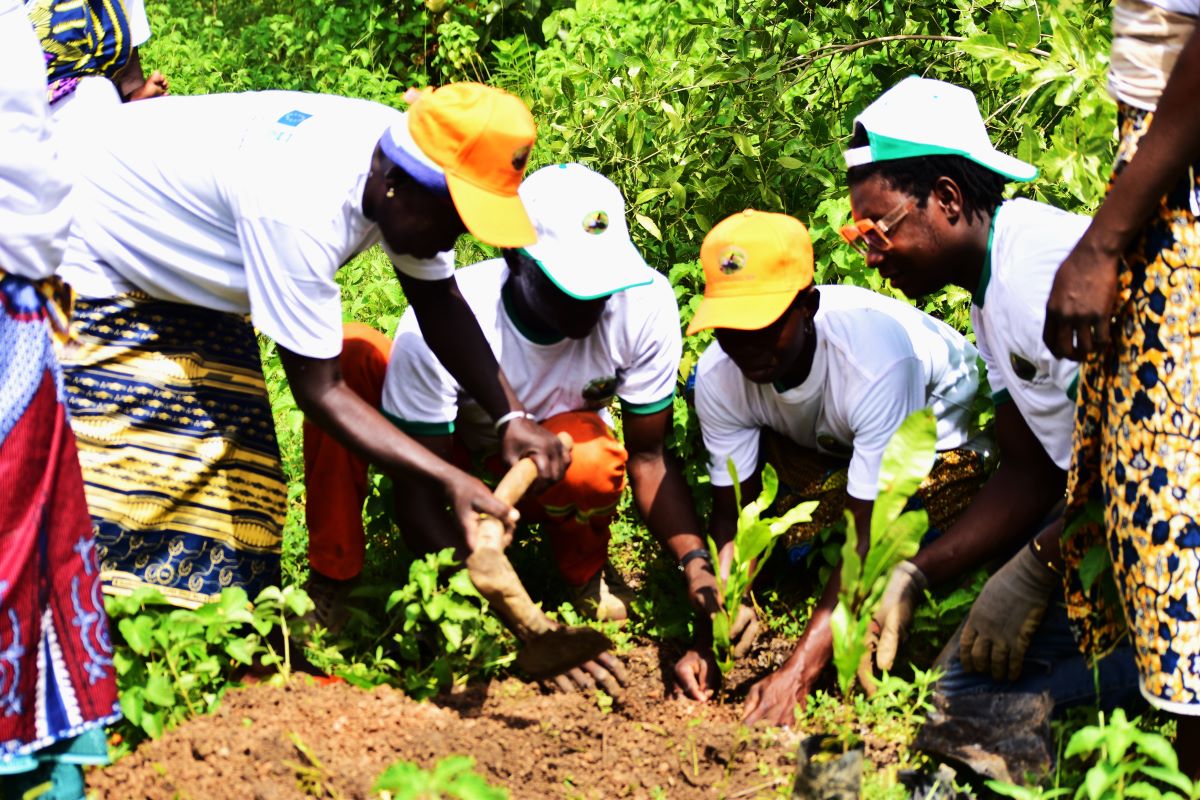
Photo credit: UNDP Burkina Faso
ORGANIZATION AND FORMALIZATION OF
ARTISANAL AND SMALL-SCALE MINERS
The Programme in Burkina Faso worked to strengthen the governance of artisanal and small-scale mining and support formalization of five associations and cooperatives in each of five pilot communes :
-
- Yoyougouna Cooperative (Toussiana)
- Unissons-nous pour bâtir Dano Cooperative (Dano)
- ROUMDE Ceramic Stove Producers’ Association (Toécé)
- Djawolim Development Association (ADD) (Tiébélé)
- Tchériba Women Potters’ Cooperative (Tchériba)
Tailored support included providing templates of cooperatives’ bylaws and internal rules, financial support, legal documentation, site identification, landowner negotiations, as well as technical and environmental studies. While the issuance of Artisanal Mining Authorizations (AEAs) remains limited and slow in the country, progress proves that facilitation support is necessary to reduce informality, mitigate environmental impacts, and maximize local economic benefits.
The Programme also strengthened artisanal miners’ capacities in knowledge and awareness of mining regulations and sustainable extraction techniques.
ENVIRONMENTAL, SOCIAL, GOVERNANCE AND SAFETY PRACTICES
The Programme has served as a driving force for promoting sustainable artisanal mining practices in Burkina Faso by improving environmental practices in the sector. Through targeted training, 489 artisanal miners and artisans have been equipped to better understand and mitigate the environmental impacts of their activities.
It has implemented hands-on activities, adding environmental and social dimensions to mining and construction:
Training and raising awareness
among industry stakeholders on Cut Laterite Bricks cutting/mining techniques, waste recovery from mining, as well as the need for environmental protection and restoration
Promoting circular economy and low-carbon techniques
through South-South knowledge exchange and practical training on low carbon construction materials such as Stabilized Earth Bricks
Reforestation and ecosystem restoration
in mining-impacted areas to compensate for environmental damage and restore biodiversity
Promoting safety in mining
By provision of small grants including personal protective equipment and productivity-enhancing tools to artisanal mining communities
Enhancing ASM health and safety
through knowledge-sharing initiatives on occupational health, safety and hygiene
*Personal Protective Equipment (PPE) is equipment or clothing worn by persons to protect themselves from bodily harm and occupational hazards. In mining, they include items such as helmets (hard hats), boots (gumboots), gloves, safety goggles, masks, and jackets often with fluorescent colours.

EMPOWERING WOMEN IN ARTISANAL MINING
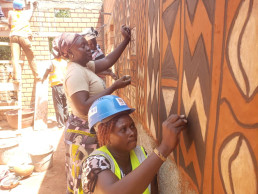
Photo credit: UNDP Burkina Faso
Women’s empowerment has been central to the Programme’s work in Burkina Faso.
Women working in mining and production of Development Minerals in target communities benefited from leadership development for equal participation in a male-dominated sector. Obtaining Artisanal Exploitation Authorizations (AEA) by women’s cooperatives is a sign of economic integration with transformational impacts ranging from stable incomes generation, sustainable livelihoods, recognition and inclusive model proving that sustainable ASM is achievable.
In addition, the Programme provided targeted support to women such as trainings on sustainable clay extraction techniques and small grants of personal protective equipment (masks, gloves, boots), tools and equipment to reduce physical strain and boost productivity.
Women specialized in pottery making learned simple and practical techniques from material quality assessment to better processing of material, which enabled them improve their productivity, improve quality of products, reduce waste materials, and reduce time and energy inputs required.
Women from Tiébélé specialized in mural art with minerals such as clay, laterite, talc, graphite and basalt, were engaged to paint the walls of the demonstration building made during the training by the Programme. The mural art of this community is a traditional female-led art and has now gained international recognition, with UNESCO inclusion of Tiébélé’s Royal Court – the historic display of this mural art − as the world’s cultural heritage in 2024.
Young women, many of them students, also learned Stabilized Earth Brick making techniques and actively participated in planning and production.
Value Addition and Low-Carbon Materials

Photo credit: Aza Communications for UNDP Burkina Faso
Skills and Value-addition to Development Minerals
The Programme conducted demonstrations of products made from Development Minerals such as Stabilized Earth Bricks and energy-efficient stoves from Cameroon during a workshop in 2023 in Burkina Faso. The workshop helped assess technical skills and materials quality available locally.
Building on that experience and the widespread need for alternative construction materials, the Programme subsequently organized a practical Training of Trainers in production of Stabilized Earth Bricks in 2024. This marked a turning point in skills transfer for value-addition, with 100 participants learning stabilized earth brick making and eco-construction techniques. A demonstration building was subsequently constructed with these bricks at the General Directorate of Quarries, as a tangible proof of the transformative impact of such a training and the material used. Stabilized Earth Bricks are low-carbon, environmentally friendly building materials. They provide several advantages:
-
- Affordability
- Good insulation from the hot weather
- Resistance to weather, termites
- Durability
- Abundance of raw materials needed for production
- Easy-to-learn production techniques
- Minimal investment needed for production
- Lower environmental impact of production (no deforestation)
The combination of these features make construction of buildings with these materials an activity worth promoting to create many jobs.
The workshop in 2023 also helped to transfer skills and techniques on value addition, benefitting potters’ cooperatives from Tchériba and Toécé. These skills and techniques included clay identification and quality test processes, good practices for oven design and energy efficiency in baking clay products.
LOW-CARBON MATERIALS
The Programme organized the Africa Forum on Low-Carbon Materials in 2024 in Ouagadougou, Burkina Faso, and a session on Low-Carbon Materials at the West Africa Mining Week 2024 (SAMAO 2024).
The Forum raised awareness about a variety of low-carbon, circular building materials and their job creation potential. It advocated for using locally available resources to promote entrepreneurship among young people and women, and respond to the challenges of growing urbanization, while doing so in an environmentally sustainable manner.
During the SAMAO 2024, the Programme brought together a panel of experts to explore environmentally sustainable, locally driven solutions in construction and mining. The panel emphasized Africa’s urgent infrastructure needs and the environmental cost of cement, advocating to use local materials to reduce emissions and create jobs. It also highlighted the untapped potential of Development Minerals within mining value chains, calling for policy reforms, local procurement, and vocational training to drive circular economies and empower communities. The session underscored the transformative role of Development Minerals in aligning Africa’s growth with climate resilience and social equity.
Together, the events attracted significant interest from policy makers and stakeholders in West and Central Africa in spreading the production of low-carbon materials made from minerals available in abundance throughout the region, and creating jobs − especially for youth.
MEDIA
STORIES AND BLOGS
Voices from the field
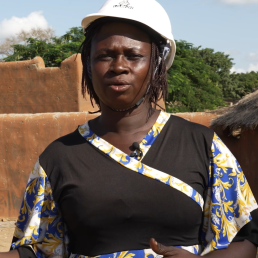
“
We have received training to better organize ourselves into associations or cooperatives, personal protective equipment such as helmets, masks, gloves, clay extraction tools—our raw material—and a vehicle for transporting our equipment and products. Our association is now better equipped to compete for large contracts.
”
“
We have received training to better organize ourselves into associations or cooperatives, personal protective equipment such as helmets, masks, gloves, clay extraction tools—our raw material—and a vehicle for transporting our equipment and products. Our association is now better equipped to compete for large contracts.
”
Pauline Tagnabou
Association for the Development of Women in Tiébélé (Mural Paintings)

“
This Programme is a breath of relief for our resilient women who work tirelessly day and night to take care of their families and, indirectly, become a source of supply and income for the municipality. The impact is immense for the producers, the consumers, and even for the entire population. Today, this allows us to envision tourism in our area, given the steadily growing production.
”
“
This Programme is a breath of relief for our resilient women who work tirelessly day and night to take care of their families and, indirectly, become a source of supply and income for the municipality. The impact is immense for the producers, the consumers, and even for the entire population. Today, this allows us to envision tourism in our area, given the steadily growing production.
”
Alidou Ouedraogo
Second Vice-President of the Special Delegation of the Commune of Toécé
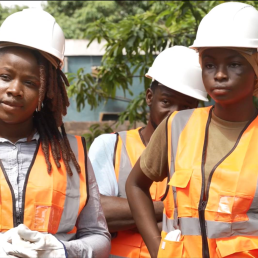
“
Through the training, we learnt that the very laterite soil that we walk upon everyday can be put to use, uses that can be very efficiently used in the future. And with progress nowadays, I think we need to reconsider these low carbon materials that we have been neglecting in the past and which will allow us to build our houses in a durable manner and deal with climate effects in the future.
”
“
Through the training, we learnt that the very laterite soil that we walk upon everyday can be put to use, uses that can be very efficiently used in the future. And with progress nowadays, I think we need to reconsider these low carbon materials that we have been neglecting in the past and which will allow us to build our houses in a durable manner and deal with climate effects in the future.
”
L-R: Fabiola Ela Doamba, geomatician and topographer, and Angelica Séré, engineering student
Videos
Project for the Enhancement, Strengthening, and Artisanal Exploitation of Development Minerals (PVREAMD)
Pottery: An Activity with High Development Potential Kassena Traditional Wall Painting: Promoting a Socio-Cultural Activity with High Potential
Enhancing Cut Laterite Bricks (CLB)
Kassena Traditional Wall Painting: Promoting a Socio-Cultural Activity with High Potential
Photos
IN THE NEWS
- Development Minerals Sector: Training and Sharing Experiences as a Taste of 5th SAMAOBurkina Faso
26 September 2023
Sidwaya newspaper - Pre-SAMAO workshop: actors equipped to develop mineralsBurkina Faso
27 September 2023
Free Info - Quarry sub-sector: Arsène Hien produces 1,000 bricks per day in DanoBurkina Faso
27 November 2023
Mines News Burkina
RESOURCES
EVENTS
- There are no upcoming events.
- There are no upcoming events.
Latest Past Events
West African Mining Week (SAMAO 2024)
Ouagadougou, Burkina FasoThe Sixth Edition of the West African Mining Week (SAMAO 2024) on the theme “Critical minerals: What development strategies for […]
Africa Forum on Low-Carbon Materials and Value Addition to Development Minerals
Ouagadougou, Burkina FasoThe Africa Forum on Low-Carbon Materials and Value Addition to Development Minerals was held in Ouagadougou, Burkina Faso from 24th to 25th September, 2024. […]
Training of Trainers on Low-Carbon Materials: Stabilized Earth Brickmaking and Demonstration Building
Ouagadougou, Burkina FasoThe Programme organized a Training of Trainers on production of Stabilized Earth Bricks – a type of low-carbon material following […]
Knowledge-Sharing Workshop on Challenges and Opportunities for the Development Minerals Sector
Ouagadougou, Burkina FasoThis workshop, dubbed the “pre-SAMAO workshop” contributed to the advancement of Burkina Faso’s Development Minerals sector. Jointly organized by the […]

